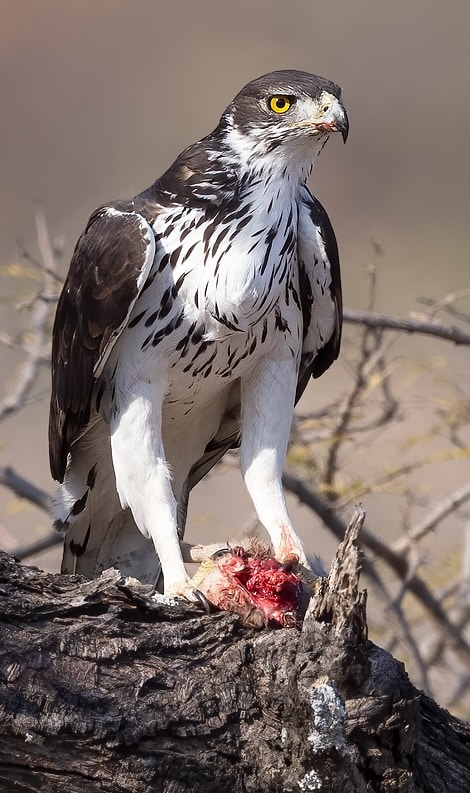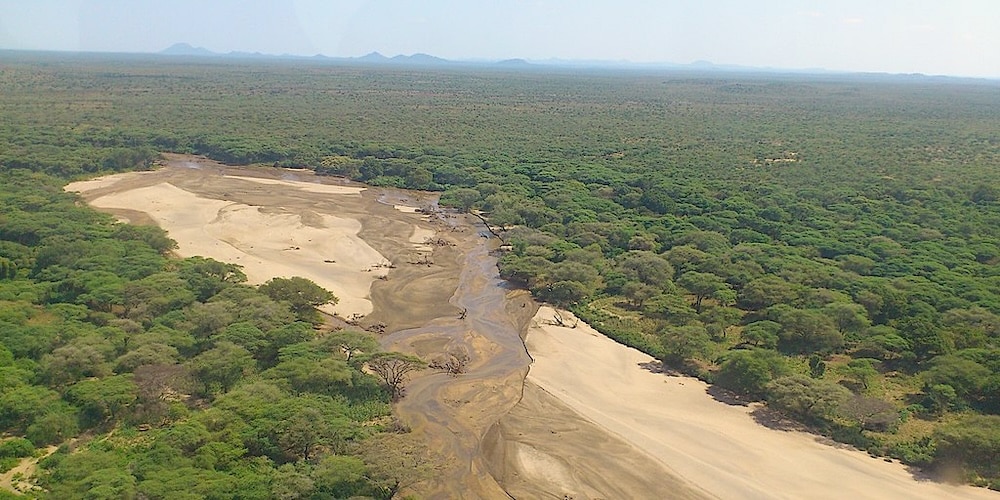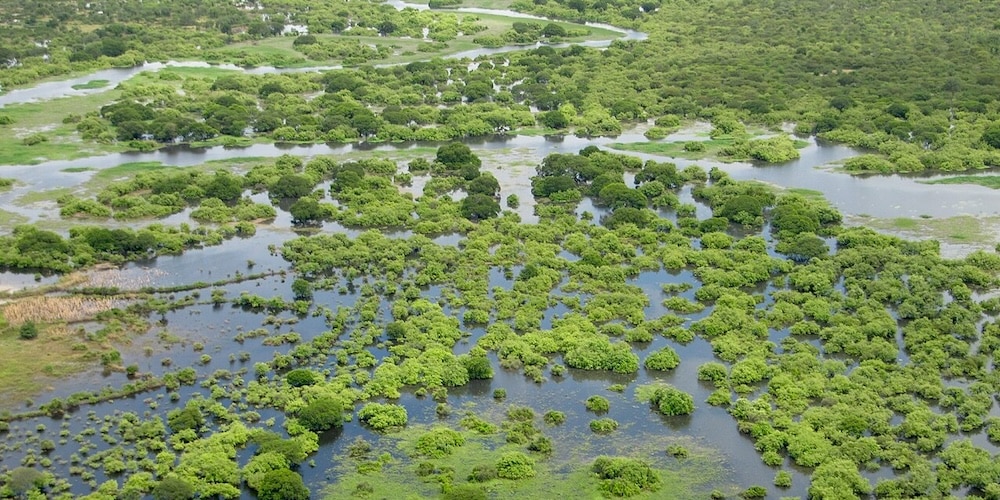Republic of South Sudan

South Sudan is a landlocked country in East Africa. It is bordered on the north by Sudan; on the east by Ethiopia; on the south by the Democratic Republic of the Congo, Uganda and Kenya; and on the west by the Central African Republic. South Sudan’s diverse landscape includes vast plains and plateaus, dry and tropical savannahs, inland floodplains and forested mountains. The Nile River system is the defining physical feature of the country, running south to north across its centre, which is dominated by a large swamp known as the Sudd. South Sudan has a population of c.12.2 million in a country with an area of over 644,000 km2 (just under 249,000 square miles). Juba is the capital and largest city with a population of around 500,000 people. A civil war lasted until 2020, but the country still (2025) experiences much unrest and clashes between rival armed militias and ethnic violence – democratic elections have been postponed several times. Famine has also been widespread and recent.
Rich mineral resources are available in South Sudan including: petroleum, natural gas, gold, silver, chromite, asbestos, manganese, gypsum, mica, zinc, iron, lead, uranium, copper, kaolin, cobalt, granite, nickel and tin.
Several eco-regions extend across South Sudan: the East Sudanian savanna, Northern Congolian forest-savanna mosaic, Saharan flooded grasslands (Sudd), Sahelian Acacia savanna, East African montane forests, and the Northern Acacia-Commiphora bush-lands and thickets. Consequently, the country is covered in tropical forest, swamps, and grassland. The White Nile passes through the country, passing by Juba. The Sudd is formed by the White Nile, known locally as the Bahr al Jabal, meaning ‘Mountain Sea’.

The White Nile – ©Rod Waddington CC BY-SA 2.0 via Wikimedia Commons
South Sudan has a tropical climate, characterised by a rainy season of high humidity and substantial rainfall followed by a drier season. The temperature on average is always high with July being the coolest month with average temperatures between 20 and 30 °C with March being the warmest month with average temperatures ranging from 23 to 37 °C. The amount of rainfall increases further south where there are swamps and rain forest. The most rainfall is seen between May and October, but the rainy season can commence in April and extend until November. On average May is the wettest month. The season is influenced by the annual shift of the Inter-Tropical Zone and the shift to southerly and southwesterly winds leading to slightly lower temperatures, higher humidity, and more cloud coverage.

Kapoeta Area Savanna – ©Олег Сокол CC BY-SA 3.0 via Wikimedia Commons
The dry regions are plagued by sand storms, known as haboob, which can completely block out the sun. In the northern and western semi-desert areas, people rely on the scant rainfall for basic agriculture and many are nomadic, traveling with their herds of sheep and camels. Nearer the River Nile, there are well-irrigated farms growing cash crops.
Birding South Sudan
Habitats in the country include grasslands, high-altitude plateaus and escarpments, wooded and grassy savannas, floodplains, and wetlands. Associated wildlife species include the endemic white-eared kob and Nile Lechwe, as well as elephants, giraffes, common eland, giant eland, oryx, lions, African wild dogs, cape buffalo, and topi (locally called tiang). Little is known about the white-eared kob and tiang, both types of antelope, whose magnificent migrations were legendary before the civil war. The Boma-Jonglei Landscape region encompasses Boma National Park, broad pasturelands and floodplains, Bandingilo National Park, and the Sudd, a vast area of swamp and seasonally flooded grasslands that includes the Zeraf Wildlife Reserve.
South Sudan’s protected area of Bandingilo National Park hosts the second-largest wildlife migration in the world. Surveys have revealed that Boma National Park, west of the Ethiopian border, as well as the Sudd wetland and Southern National Park near the border with Congo, provided habitat for large populations of hartebeest, kob, topi, buffalo, elephants, giraffes, and lions.

Pibor area swamp – ©Олег Сокол CC BY-SA 3.0 via Wikimedia Commons
South Sudan’s forest reserves also provided habitat for bongo, giant forest hogs, red river hogs, forest elephants, chimpanzees, and forest monkeys. Surveys have revealed that significant, though diminished wildlife populations still exist, and that, astonishingly, the huge migration of 1.3 million antelopes in the southeast is substantially intact.
The nation’s wildlife is threatened by hunting and twenty-one mammal species and nine bird species are endangered. These include waldrapp, northern white rhinoceros, tora hartebeest and the slender-horned gazelle.
The total area under protection is around 143,000 km2 (55,000 square miles) spread over 23 protected areas which account for 15% of the South Sudanese territory. The largest protected area is the Sudd Wetland, an IBA covering 57,000 km2 (22,000 square miles). It is also a Ramsar Site with over 400 bird species, 100 mammal species, and 100 fish species. Sadly, many of the protected areas are exploited for illegal hunting and rearing of livestock. Many protected areas are in the flood plains of the Nile River. Some of the other protected areas are the Boma National Park in the Boma-Jonglei Landscape region, an oil rich area on the eastern border with Ethiopia; the Southern National Park bordering Democratic Republic of the Congo; the Bandingilo National Park; Nimule National Park and Shambe National Park, another IBA.
-
Number of bird species: 833
(As at February 2025)
-
Avibase
PDF ChecklistThis checklist includes all bird species found in South Sudan , based on the best information available at this time. It is based on a wide variety of sources that I collated over many years. I am pleased to offer these checklists as a service to birdwatchers. If you find any error, please do not hesitate to report them. -
Bird ID
Annotated ListList of Birds of South Sudan -
E-Bird
PDF ChecklistThis checklist is generated with data from eBird (ebird.org), a global database of bird sightings from birders like you. If you enjoy this checklist, please consider contributing your sightings to eBird. It is 100% free to take part, and your observations will help support birders, researchers, and conservationists worldwide. -
Wikipedia
Annotated ListThis is a list of the bird species recorded in South Sudan. The avifauna of South Sudan include a total of 831 species.
-
Birds of the Horn of Africa
| Ethiopia, Eritrea, Djibouti, Somalia and Socotra | By Nigel Redman, Terry Stevenson & John Fanshawe | Helm | 2011 | Edition 2 | Paperback | 512 pages, 213 colour plates, 1000+ colour distribution maps, colour & b/w maps | ISBN: 9781408157350 Buy this book from NHBS.com -
Distribution Atlas of Sudan's Birds with Notes on Habitat and Status
| By G Nikolaus | Zoologisches Forschungsmuseum Alexander Koenig | 1987 | Paperback | 322 pages, B/w illus, maps | ISBN: 9783925382253 Buy this book from NHBS.com
-
African Bird Club
WebsiteThere is plenty to attract the keen birdwatcher to Sudan were it not for major concerns over safety. One can only hope that the situation improves sufficiently to allow greater travel in this country. Sudan is not a country where you will see the huge range of species on offer in East Africa but the Nile which flows through the capital Khartoum is a major migration corridor and birdwatching in this area will provide a good range of species and some surprises -
Agency for Conservation and Development (ACD)
WebsiteAgency for Conservation and Development was established in 2010 to protect and conserve the ecosystem of national parks and Game Reserves of Fangak Island and highland Boma.
-
*List of protected areas of South Sudan
InformationSatellite ViewBird Sanctuaries, Forest reserves, RAMSAR sites etc. -
FR Imatong Forest Reserve
InformationSatellite ViewThe forest contains many birds found in no other part of South Sudan, and is a resting place for European songbirds en route to their overwintering places in East Africa and also the endangered spotted ground-thrush Zoothera guttata. -
IBAs
WebsiteSatellite ViewThe enormous range of latitudes supports portions of 6 biomes: Saharan-Sindian in the north; Sahel; much of the south is within Sudan-Guinea Savanna; Guinea-Congo Forests in the south-west; Somali-Masai in the south-east; the southern mountains lie within the Afrotropical Highlands biome. Inland wetlands dominated by the Sudd are significant for large numbers of waterbirds and some of Sudan -
NP Bandingilo
InformationSatellite ViewThe Bandingilo National Park, sometimes spelled Badingilo, is located in South Sudan's Equatoria region. The park covered the erstwhile states of Central Equatoria and Eastern Equatoria. It was established in 1992. Situated in a wooded area near the White Nile River, it is over 10,000 square kilometres (3,900 square miles) in size. It is home to the world's second-largest annual animal migration (largest is the Serengeti migration), involving multiple species of antelope including reedbuck, tiang, and white-eared kob, takes place in the park, which is also home to iconic African megafauna like the Nubian giraffe. -
NP Boma
InformationSatellite ViewBoma National Park is a protected area in eastern South Sudan near the Ethiopian border. It was established in 1986 and covers 22,800 km2 (8,800 sq mi) of grasslands and floodplains. It is also an important bird area: avifauna includes Ruppell's vulture and the black-chested snake eagle. The neighbouring Gambela National Park in Ethiopia protects similar species. -
NP Lantoto
InformationSatellite ViewLantoto National Park is a protected area in southwestern South Sudan on the border with the DRC. The park has an area of 760 km2 (290 sq mi) and is predominantly woodland, forest and open glades. -
NP Nimule
InformationSatellite ViewThe Nimule National Park is found in South Sudan. It was established in 1954, and extends over an area of 410 km². -
NP Shambe
InformationSatellite ViewThe Shambe National Park is found in South Sudan. It was established in 1985 and extends over an area of 620 km2 (240 square miles). -
NP Southern
InformationSatellite ViewA.B. Anderson, a former Assistant Game Warden, reported that in 1950 that the Southern National Park was spread over an area of 7,800 square miles (20,000 km2). It was drained by three rivers: the Sue River to the west, a well-defined channel that joined the Nile; the Gel River to the east; and the Ibba River in the centre of the park. The Gel and Ibba Rivers, after flowing through the park, formed a flood plain which made the habitat swampy.
-
eBird
SightingseBirding This Year
-
Exploring Tourism
Tour Operator10 Days Bird Watching Safari Tour -
Ultimate Wild Safaris
Tour Operator10-day South Sudan Tour - Birdwatching

